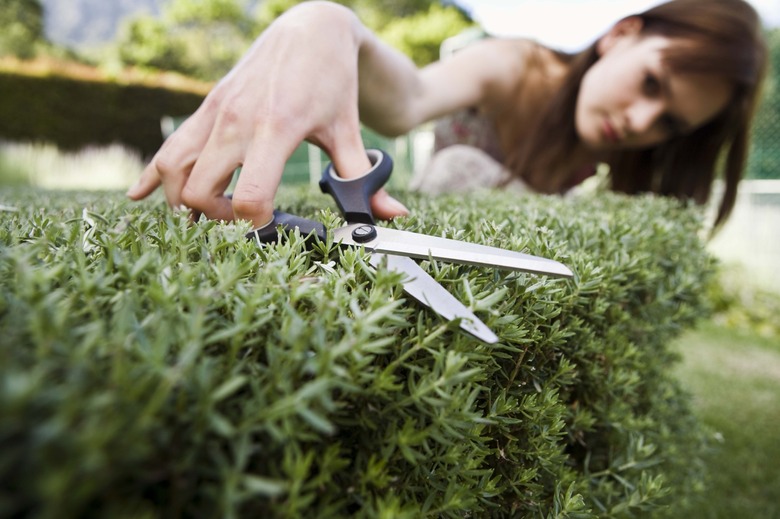How To Get Arborvitae Thicker
Things Needed
-
Hedge clippers
-
Pruning shears
Tip
In extreme cases, weak and spindly arborvitae may be stimulated to fill out by cutting back. Cut the top 2 feet or so of the arborvitae off. Use a pruning saw to make the cut above the nearest lateral branch. The arborvitae will bounce back to produce fuller growth over the season. However, improving cultural conditions alone may stimulate the arborvitae to grow back on its own. A soil test will tell you what and how much fertilizer to give your arborvitae.
Arborvitae is a large genus of coniferous trees. Their quick-growing habits and thick growth make them ideal for creating hedges and living fences. But an arborvitae can face a few obstacles that may make it thin out. Most of these problems can be cured with a little pruning to stimulate thicker growth. You can prune arborvitae at any time during the growing season. For the quickest bounce back, prune in late spring just before arborvitae produces new growth.
Step 1
Check your arborvitae's growing conditions to make sure they are ideal. Arborvitae needs full sun, nutritious soil and ample water. Arborvitaes that grow in poor or waterlogged soil, light shade or receive less than 1 inch of water per week are likely to produce thin, spindly growth. If you don't fix its cultural problems, no amount of pruning will fill your arborvitae out.
Step 2
Prune to let more light in. Your arborvitae's bushy top growth may be preventing light from reaching its lower branches. If this is the case, shear the top of the arborvitae with manual or electric pruning shears to allow light to access the bottom. Prune just enough to let light reach the lower branches. Never prune back into the old wood of the plant that does not have green, leafy growth. Pruning cuts made into old wood that leave a leafless stem behind will leave a permanent bare spot. The stem will never grow back.
Step 3
Fill in thin spots. Prune long, spindly branches or branches near thin spots back. Make the pruning cut 1/4 inch above the nearest fork in the stem. The pruning cut will stimulate and redirect growth to the stem you make the pruning cut above. Use this to direct growth into thin spots. Do not prune back into old wood.
